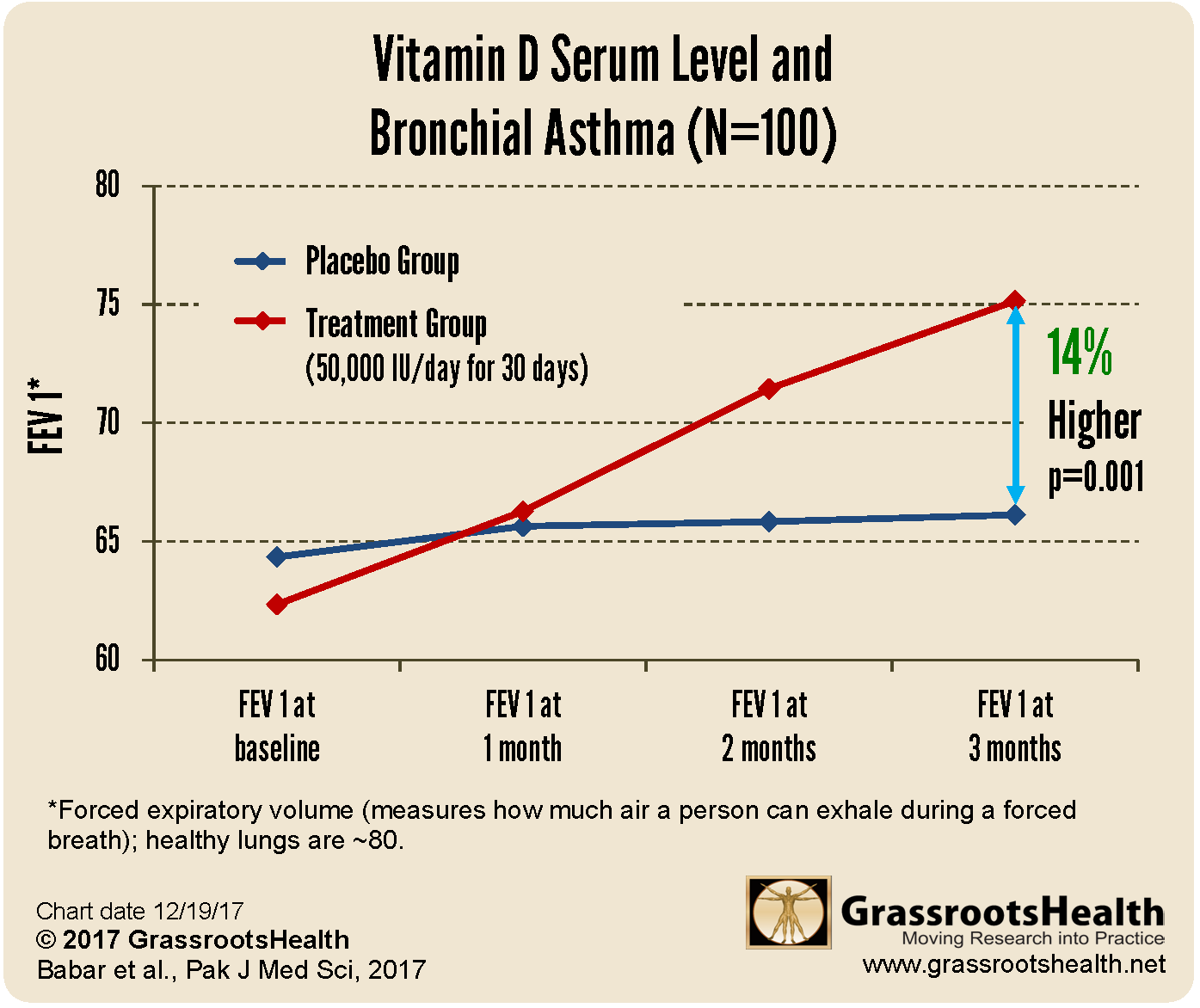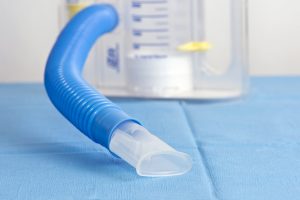Published on December 20, 2017
A case control study using 100 patients in a private clinic in Pakistan found that vitamin D improved FEV1 measurements for asthmatics within two months, and even more by three months.

How the Study Was Made
The researchers took 100 patients within a private Pakistan medical practice aged 18 to 50 years and diagnosed with bronchial asthma. The patients were randomly divided into two groups – a treatment group (50,000 IU vitamin D3 per day for 30 days) and a control group (placebo). Standard asthma medication was continued with both groups. FEV1 measurements were taken at baseline, 1 month, 2 months and 3 months.
In the beginning both groups were very similar.
| Variable | Control Group | Treatment Group |
| Male/Female (N) | 26/24 | 29/21 |
| Age (years) | 26.50 +/- 5.50 | 27.6 +/- 6.50 |
| BMI (Kg/m2) | 24.75 +/- 3.20 | 26.70 +/- 6.40 |
| Duration of asthma | 12.40 +/- 3.50 | 11.66 +/- 3.05 |
| Pre-treatment vit D level (ng/ml) | 14.23 +/- 1.66 | 15.30 +/- 2.05 |
| Pre-treatment FEV1 | 64.35 +/- 3.16 | 62.35 +/- 2.16 |
What is FEV1?
 FEV1 is an abbreviation for “forced expiratory volume in 1 second.” It is a common measurement used in testing lung conditions whereby a patient breathes out forcibly on a plastic tube device, called a spirometer, to determine the volume of air they can expel. FEV1 is often presented as a percentage of an expected value, based on factors including age, gender, height, and race. The Lung Institute has a good web page that describes it in more detail and this set of charts from the National Heart, Lung, and Blood Institute shows common values for adults and for asthmatics.
FEV1 is an abbreviation for “forced expiratory volume in 1 second.” It is a common measurement used in testing lung conditions whereby a patient breathes out forcibly on a plastic tube device, called a spirometer, to determine the volume of air they can expel. FEV1 is often presented as a percentage of an expected value, based on factors including age, gender, height, and race. The Lung Institute has a good web page that describes it in more detail and this set of charts from the National Heart, Lung, and Blood Institute shows common values for adults and for asthmatics.
The average age of participants in this study was 26 years old, so a normal FEV1 for a 20-39 year old is 80%; persistent, moderate asthma would be between 60 and 80; and persistent, severe asthma less than 60.
Blood levels and Asthma
Initial vitamin D measurements showed an average of approximately 15 ng/ml (37 nmol/L) but measurements at the end of the study period were not reported. We do know that most every participant was deficient at the start and after an adequate dose of vitamin D to change their level a change in FEV1 was noticed at 2 months.

References
Vitamin D supplementation improves FEV1 in patients of Bronchial Asthma
Babar MZM et al.
Pakistan Journal of Medical Sciences
October 2017
Read Paper
